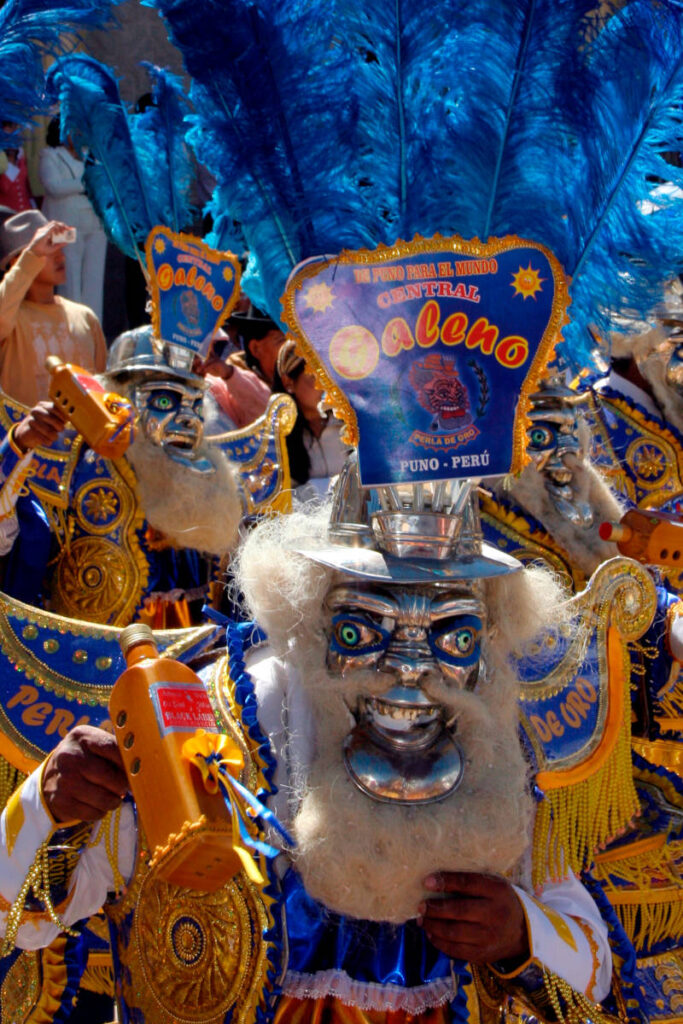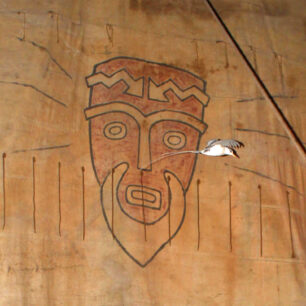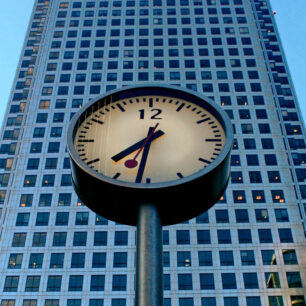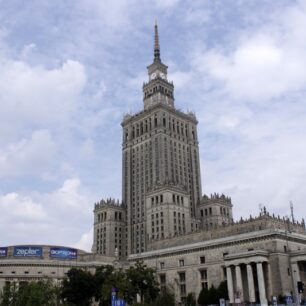Often referred to as the folkloric capital of Peru, Puno hosts the largest cultural festival with parades, music and dance performances, traditional costumes and lots of other activities each year at the beginning of February.
Puno sits on the shores of Lake Titicaca, the highest navigable lake in the world and a sacred site for the Incas. The stunning natural beauty of the region, with its azure waters and snow-capped peaks, provides a breathtaking backdrop to the festivities.

Dating back centuries, the February Carnival in Puno has its roots in pre-Columbian times when indigenous communities celebrated the arrival of the harvest season with elaborate festivities.
The Festivity of Virgen de la Candelaria of Puno was declared an Intangible Cultural Heritage of Humanity in 2014 by the UNESCO.
With the Spanish colonization, Catholic traditions merged with indigenous rituals, giving rise to the unique blend of culture that defines the carnival today.

Celebrated to honor the Virgin of Candelaria, the patron saint of the city of Puno, the Festival de la Candelaria or Carnival of Puno is a colorful event merging Catholic traditions brought to Peru by the Spanish conquerors and age-old Aymara’s and Inca’s customs.
This is the third largest festival in South America after the Carnival in Rio de Janeiro and the Carnival de Oruro in Bolivia.
The February Carnival kicks off in earnest with the “Diablada,” a theatrical reenactment of the battle between good and evil featuring elaborately costumed dancers. Each dance troupe, or “comparsa,” represents a different character from Andean mythology.
The central figure is often the “Diablo,” or devil, adorned with horns, feathers, and elaborate headdresses. Accompanying the Diablo are angelic figures, symbolic of the eternal struggle between darkness and light.

Throughout the carnival, the streets of Puno come alive with music, as brass bands and traditional musicians fill the air with the infectious rhythms of huayno and saya. Visitors are encouraged to join in the revelry, with impromptu dance parties breaking out on street corners and plazas.
The highlight of the February Carnival is undoubtedly the Great Parade, a dazzling procession through the streets of Puno showcasing the best of Andean culture. Floats adorned with flowers and traditional motifs glide past, while dancers in elaborate costumes perform intricate choreographies to the delight of the crowds.

Beyond the spectacle and merrymaking, the February Carnival holds deep cultural significance for the people of Puno. It serves as a celebration of identity and heritage, a reaffirmation of the bonds that unite the community in times of joy and adversity.

For those planning to attend the February Carnival in Puno, it’s advisable to book accommodations well in advance, as hotels tend to fill up quickly during this peak tourist season. Additionally, be sure to dress warmly, as temperatures in the Andean highlands can be quite chilly, especially in the evenings.
Try not to get involved in any conflicts with the locals. The Aymara’s people are easily angered when they’re under influence of alcohol and famous with the local lynches. Puno has the highest consumption of beer in Peru, and that surely shows during Carnival. While enjoying your drinks and your food, you just might bombed with some water balloons though!
Always watch your belongings, and don’t take too many valuables to the street, as thieves are unfortunately also present in Puno.

The February Carnival in Puno offers travelers a unique opportunity to immerse themselves in the vibrant culture of the Andes, to witness age-old traditions come to life against the backdrop of one of the world’s most stunning natural landscapes. It’s an experience not to be missed, a journey into the heart and soul of Peru. Great event to be visited on your way of exploring Peru, Bolivia and Titicaca lake.






